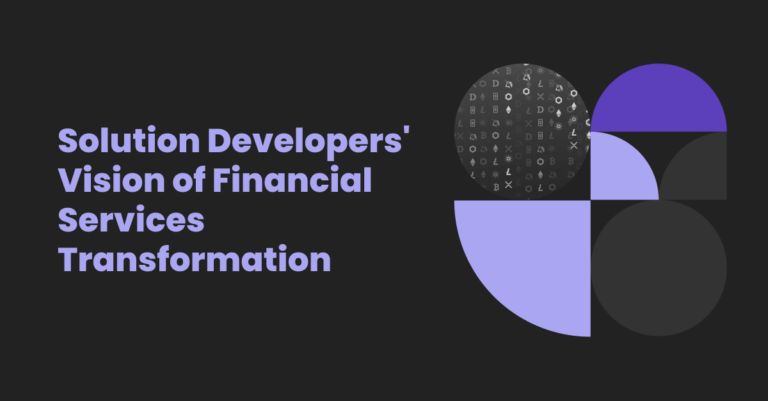Technology is changing all areas of human activity. A global pandemic and digital tools have shifted the conventional view of every part of everyday life, including the working environment.
Digital transformation is a hot topic for many enterprises. It is more than just introducing a new workplace technology. Often, implementing a digital workplace means remaining competitive and meeting new market requirements.
Dimension Data conducted research concerning 800 companies from 15 countries from 5 continents. According to their results published in the Digital Workplace Report: Transforming Your Business:
- 40% have employees working full-time from home now, increasing to 56% within two years;
- 46% have employees working part of the time from home now, increasing to 77% within two years.
A common digital workplace definition implies a set of technologies that creates a virtual equivalent of a physical workplace. A positive digital workplace experience requires careful planning and management, as it plays a fundamental role in productivity, inclusiveness, and a healthy working climate.

Benefits for Businesses
In small and mid-sized companies, employees (both regular and executive) have to solve plenty of different business tasks, actively communicate with colleagues and contractors, and work with large amounts of information. It means that digital technology related to automation of collaboration, supporting business processes, project management, and corporate content becomes critical for the business. It’s when digital workplace solutions come into play.

Implementing a digital workplace has a number of undeniable advantages.
- Better Collaboration
An effective digital workplace connects all the team members in real-time. Meetings, brainstorming, and information exchange are made easy.
- Reduced Operational Costs
Interactive chat boards and virtual meetings can successfully replace in-person communication. It massively reduces travel and operational costs.
- Remote Employment
One of the digital workplace trends is remote employment. Your geographical location no longer limits the choice of your employees.
- Better Employee Experience
If done correctly, this technology is not just software but rather a powerful tool to connect employees with the company and provide them the desired level of flexibility – no commuting, flexible working times, full instant access to the required information, etc.
- Improved Customer Experience
Including advanced data analysis tools and elaborated CRM solutions to your company’s digital workplace greatly increases customer satisfaction.
- Facilitated Training
Providing additional training to your current employees is less time- and cost-consuming than replacing parts of your team. Besides, advanced training opportunities increase the employee’s value and loyalty level.
- Business Processes Automation
Routine processes like data entry or document approval often consume too much time and slow down the workflow. Employees who don’t have to perform repetitive, boring tasks are better at using their innovative ideas and problem-solving skills.
- Management Automation
With a unified work platform, the managers can benefit from automated report collection, easy task management, and performance monitoring. Moreover, such software enables automated data exchange with HR departments and provides access to the required corporate services like CRMs, ERPs, and automated documentation systems.
Digital Workspace: Daily Routine
Creating a comfortable digital workplace for employees becomes a competitive advantage that helps companies attract and keep skilled specialists and improve overall business results.
Employees, especially young people who grew up in the digital world, expect their comfort in the workplace to be the same as in everyday life. By refusing to develop an effective digital workplace platform to meet these needs, companies force employees to be less involved and, consequently, less productive.
Let us see what is needed to succeed in creating a digital workplace.
Unified and Simplified Interface
The main challenge is to ensure that users have secure, manageable, and productive access to applications and data on different devices. Using the same applications on different platforms often means changing the user interface and functionality. In this case, users have to learn more than one interface and how to interact with them. A digital workplace helps you organize the required apps and data regardless of location or device.
Personalized Actions and Useful Information
You can provide employees with customized, contextual content, useful information, and the ability to perform their daily tasks on any device and anywhere to increase productivity. Workplace technologies that can be personalized save a lot of time and help users focus on more important and creative ideas.
Security
Individual devices pose a serious security threat – identity theft, data leaks, unauthorized access, etc. A centralized platform with a multi-factor authentication process and data analytics for identifying anomalies is a much safer environment that can significantly reduce data leakage. Such an approach applied to work processes in a digital environment benefits both employee’s and the company’s side.
Digital Workplace Strategy
Quite often, employees become more productive as they leave their offices. Motivation and effectiveness greatly depend on the quality of the work environment. A digital workplace helps you balance freedom and control. Creating a flexible, secure, and affordable environment where your employees can grow professionally underlay a digital workplace definition.
Here are the main steps you should consider when planning a comfortable environment for your company.
Audit
The company’s digital transformation is a long and complex process that involves many factors. It’s best to start with the company’s audit – defining the business’ structure and functional relationships between the departments. To understand which digital technology is required by each department, you need to have a clear idea of their aims and functions.
Choosing Your Tools
The choice solely depends on your employees’ daily tasks. More importantly, such a digital workspace should facilitate a seamless workflow. For example, suppose employees have no option of a remote digital signature and have to go to the office to submit documents. In that case, it will lead to significant time gaps, reduced productivity, and lower satisfaction levels.
Using the Existing Structures
You can start implementing digital workplace solutions by transferring already partially remote roles to an entirely digital environment. It makes the transition less stressful for employees and less cost-efficient for the company. Besides, analyzing the first experience may help you avoid mistakes and improve the process at later stages.
How to Build a Good Digital Workplace?
A digital workplace is a single platform for comfortable workflow for employees: data systemization, information search, and content personalization. Building such an environment is an essential part of the company’s digital transformation.
Here are the fundamental principles of making your way towards creating the best digital workplace experience for all your employees, executives, and customers.
- Designing a unified communications environment for the company – integrating all types of communications from e-mail and chat to audio-video calls and corporate blogs, both personal and collective.
- Creating an enterprise information space – a single access point to all types of enterprise data: documents, directories, knowledge bases, graphics, and video materials.
- Integrating all enterprise business applications and services – a single point of access to business services, aggregation of alerts and notifications, centralized collection of analytics, and reports and dashboards visualization.
- Maintaining mobility – no dedicated workstation, Internet access, and easy launch on mobile platforms (smartphones and tablets).
- Ensuring security and manageability — multi-level user access sharing, multi-factor authentication, and the ability to monitor user activity.
- Applying a UX-based approach – a user-friendly system created according to user behavior analysis.
Afterword
Overall, digital workplace trends promote innovation and higher employee productivity, help attract and keep highly skilled professionals, and increase work ethics and motivation. Using appropriate digital technology helps enterprises to build comfortable work environments that provide new, more efficient ways of working, increase employee engagement and flexibility, and use consumer-oriented styles and approaches.
















